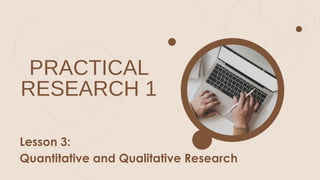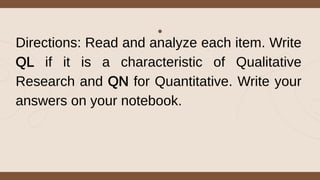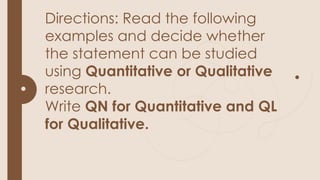This document discusses and compares quantitative and qualitative research methods. It provides definitions and characteristics of each type of research. Quantitative research uses statistical tools and measurements to test hypotheses, while qualitative research explores phenomena through interviews, observations and narratives to develop theories. Both approaches can be useful depending on the goals and nature of the research being conducted.



















